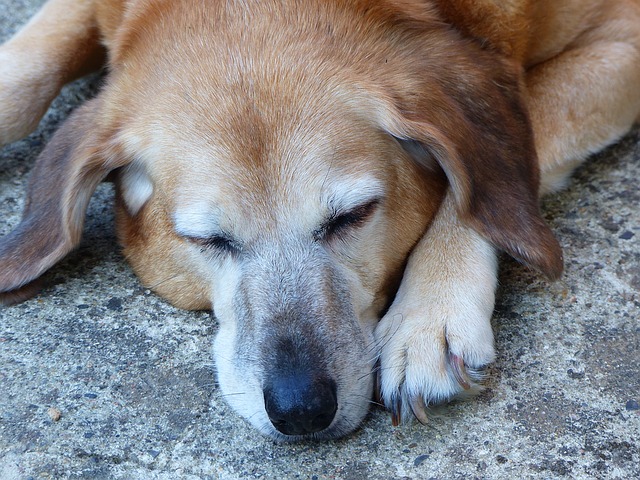Finding a lump on your dog can be a frightening experience. Our brains are conditioned to fear the worst, especially when it comes to those we love.
It is always best to seek veterinary attention should you discover a new growth on your pooch, but it may help to know that less than half of the lumps and bumps dogs develop are malignant or cancerous.

Should you discover an unfamiliar growth on your dog’s skin, schedule a visit with your veterinarian. If your pup seems tender in that spot or you notice rapid growth, redness, swelling, or pus, ask for an expedited appointment.
The vet will do a full exam and determine if a biopsy is warranted. He or she will want to know:
- If the lump appeared suddenly
- Whether its shape, color, or size has changed
- If there are changes in your dog’s behavior, appetite, or energy level

The following are the most common types of lumps and bumps vets diagnose in dogs:
Lipomas
Lipomas are often referred to as fatty tumors, and that’s exactly what they are: benign deposits of fat. They occur most often in dogs that have reached middle age or older and are considered a natural part of the aging process. Lipomas can appear anywhere on the body but are most common around the chest and ribcage.
They tend to be soft and “rolly” beneath the skin. Any dog can develop a lipoma, but larger breeds and dogs that are overweight are more prone to them. Lipomas are usually harmless and only require treatment if they are in an awkward spot that causes the dog pain or affects its mobility.

Sebaceous Cysts
Sebaceous cysts are simply plugged oil glands in the skin and, while unsightly, are typically harmless. Many rupture on their own, heal, and never come back. Others become irritated or infected to the point that your vet may recommend surgical removal and possibly a biopsy. They can occur in any breed but are seen most often in Cocker Spaniels.

Warts
Warts on dogs are caused by a virus called canine viral papillomatosis. Unlike other growths, warts – or papillomas – are most common in younger animals. They often develop around the mouth, eyes, and between the toes but can show up anywhere on the skin. Warts are similar to lipomas in that they are harmless unless they are causing your dog a problem.

Abscesses
Abscesses are accumulations of pus under the skin caused by an infection or some type of insect or animal bite. Snakes and spiders are common culprits when it comes to abscesses because the bite wounds are easily concealed by a dog’s fur, allowing the infection to fester.
A dog with an abscess will often experience fever, lethargy, and discomfort around the site. Your vet will clean, drain, and flush the wound to prevent deeper infection and complications. He or she will also prescribe antibiotics to control the bacteria and pain medication if needed.

Cancerous Tumors
Cancerous growths on dogs can be either malignant or benign, sometimes even a combination of both. Malignant lumps tend to spread rapidly and can metastasize throughout the body. Benign tumors tend to stay in one place and not metastasize but may grow quite large.
Mast cell tumors are the most common skin cancers diagnosed in dogs. They are most often seen in Boxers, Boston Terriers, Labradors, Beagles, and Schnauzers.

Even if your dog has undergone a biopsy and the mass is not cancerous, it is still important to monitor that lump and periodically check for others. It may help to chart the locations and sizes of your pup’s growths to make it easier to keep track of any changes.
 Toledo, United States.
Toledo, United States.